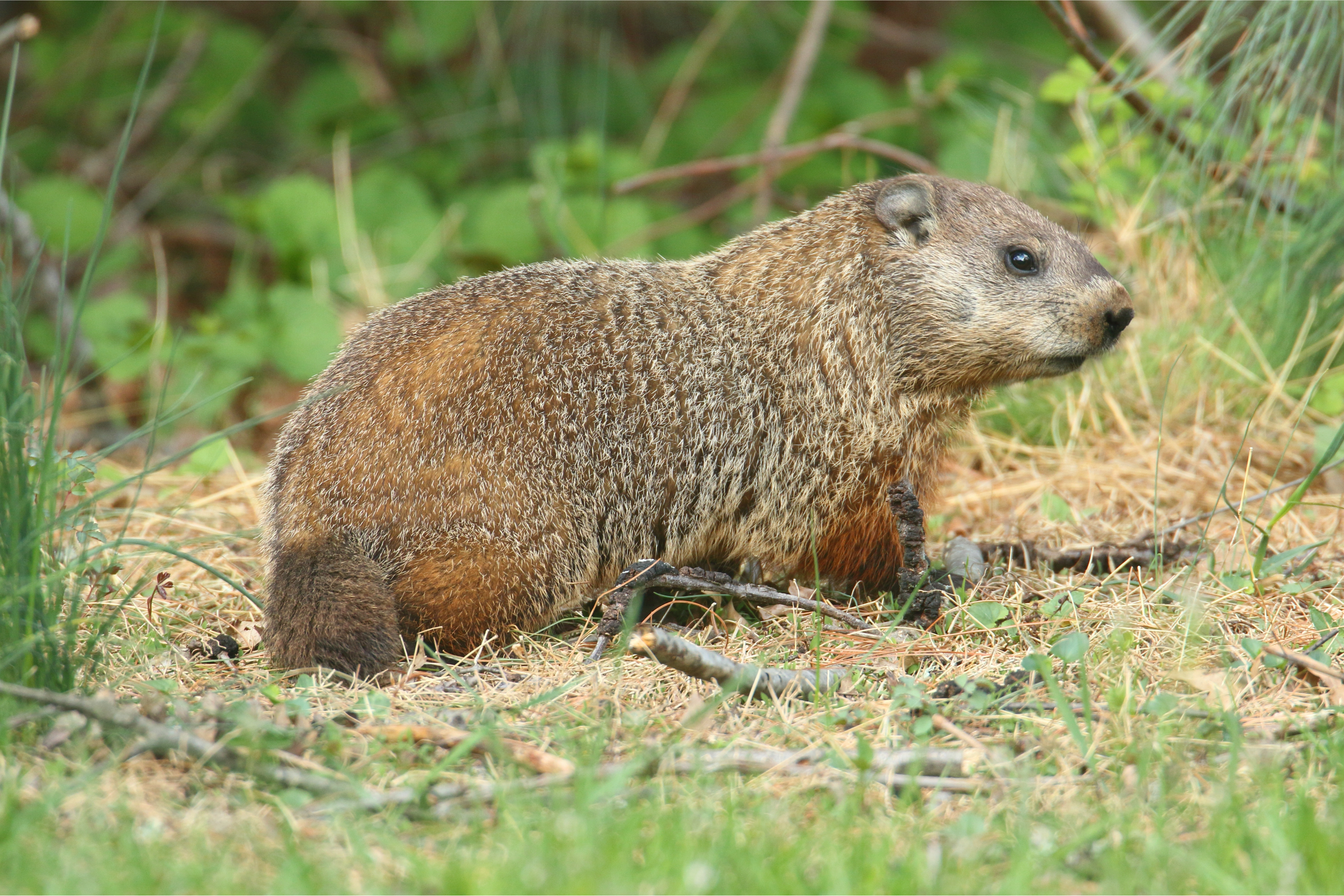Groundhog
(Marmota monax)

Description
The groundhog (Marmota monax), also known as a woodchuck, is a rodent of the family Sciuridae, belonging to the group of large ground squirrels known as marmots. The groundhog is a lowland creature of North America; it is found through much of the Eastern United States, across Canada and into Alaska. It was first scientifically described by Carl Linnaeus in 1758. The groundhog is also referred to as a chuck, wood-shock, groundpig, whistlepig, whistler, thickwood badger, Canada marmot, monax, moonack, weenusk, red monk, land beaver, and, among French Canadians in eastern Canada, siffleux. The name "thickwood badger" was given in the Northwest to distinguish the animal from the prairie badger. Monax (Móonack) is an Algonquian name of the woodchuck, which means "digger" (cf. Lenape monachgeu). Young groundhogs may be called chucklings. The groundhog is by far the largest sciurid in its geographical range, excepting British Columbia where its range may abut that of its somewhat larger cousin, the hoary marmot. Adults may measure from 41.8 to 68.5 cm (16+7⁄16 to 26+15⁄16 in) in total length, including a tail of 9.5 to 18.7 cm (3+3⁄4 to 7+3⁄8 in). Weights of adult groundhogs typically fall between 2 and 6.3 kg (4 lb 7 oz and 13 lb 14 oz). Male groundhogs average slightly larger than females and, like all marmots, they are considerably heavier during autumn (when engaged in autumn hyperphagia) than when emerging from hibernation in spring. Adult males average year-around weight 3.83 kg (8 lb 7 oz), with spring to fall average weights of 3.1 to 5.07 kg (6 lb 13 oz to 11 lb 3 oz) while females average 3.53 kg (7 lb 13 oz), with spring to fall averages of 3.08 to 4.8 kg (6 lb 13 oz to 10 lb 9 oz). Seasonal weight changes indicate circannual deposition and use of fat. Groundhogs attain progressively higher weights each year for the first two or three years, after which weight plateaus. The groundhog prefers open country and the edges of woodland, and is rarely far from a burrow entrance. Marmota monax has a wide geographic range. It is typically found in low-elevation forests, small woodlots, fields, pastures and hedgerows. It constructs dens in well-drained soil, and most have summer and winter dens. Human activity has increased food access and abundance, allowing M. monax to thrive.
Taxonomic tree:







